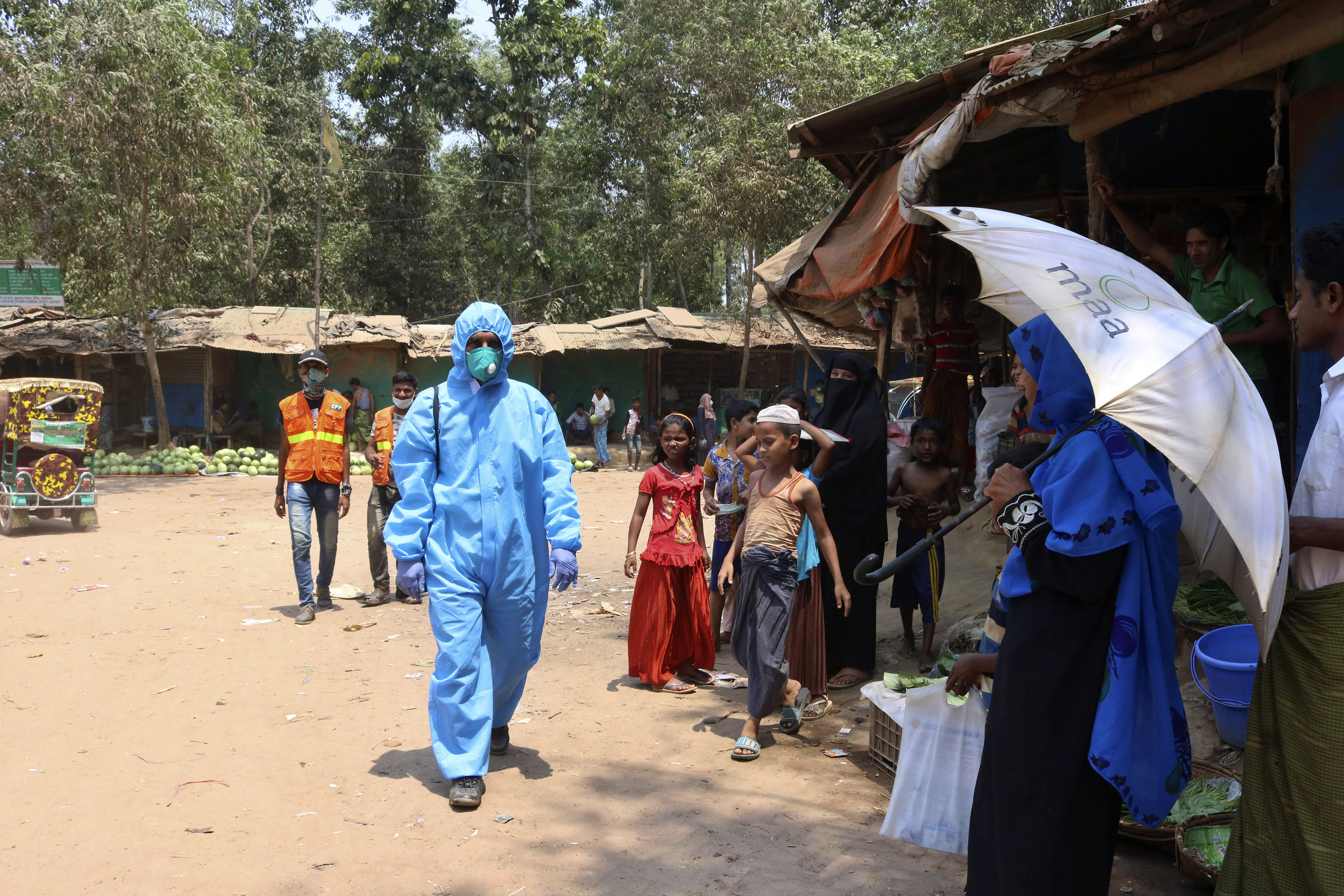
Shafiqur Rahman—AP
by Mohammad Kepayet Ullah 18 May 2020
Now the entire planet is rudderless and anxious of the threat of COVID-19 pandemic. This unknown enemy has already spread in every corner of the world, even in the world’s biggest Rohingya refugee camp in Bangladesh. Emergency teams are racing to contain a possible coronavirus outbreak in the largest refugee settlements. is home to nearly 1.1 million Rohingya refugee who fled violence in Myanmar. Some people have already tested positive for the virus in the area. A refugee and residents living nearby, one of them disappeared for hours after finding out he’d been infected while they now in isolation. Authorities worried that the virus has already spread in camp. Here, people are living 40,000 to 70,000 people per square kilometer. That’s at least 1.6 times the population density on board the Diamond Princess cruise ship. Where the disease spread four times as fast as in Wuhan at the peak of the outbreak.
It is just a tinderbox and an accident waiting to happen really. Into the shelters at least 5 people live one single room. If anybody stretches his arms up he can touch another. Everyone is breathing the same air inside that shelter, coughing, sneezing without covering their mouth. So imagine the kind of situation over there and the kind of close proximity that the Rohingya refugees have to deal with. Another thing the World Health Organization constantly reminds people to wash their hands regularly, but over at the refugee camps, they don’t even have enough clean water to drink. Don’t even talk about having masks or hand sanitizers, that’s almost non-existent. Because more importantly as well as many of the Rohingya refugees don’t even know the teaches of COVID-19 and how to protect themselves from this contagious disease. Because internet access has been limited for them since September of last year. They have limited access to information and another point on this matter is, the monsoon season is just around the corner. Besides 1.1 million refugees in camps, around 4 lakh local Bangladeshi communities are living in the surroundings, are at risk of COVID-19 infection. The United Nations has also announced additional precautionary measures against coronavirus contagion in the area.
World Food Programme (WFP) has warned that Covid-19 threatens to reverse development gains made by Bangladesh in the last 50 years and has appealed for $320 million to help the most vulnerable. Some $200 million of this funding is required for the agency’s COVID-19 response in Bangladesh and the remaining $120 million is needed to help the Mainly-Muslim ethnic Rohingyas for the next six months.
More than 50,000 children in Cox’s Bazar refugee camp are most vulnerable to novel Coronavirus. Save the Children is urgently calling for the international community to stand in solidarity with Bangladesh and provide funds and much-needed medical resources to protect the Rohingya population and the host community.
Logically, all are expecting the Bangladeshi government does some protective step for Rohingya refugees, because they are seated in the territory of Bangladesh. But everyone must remember that Bangladesh is one of the poorest countries in the world. They too are struggling with COVID-19 infections of their own. They too have had a lot of strains on their own healthcare system. Let’s give me an example, more than 160 million populations in Bangladesh alone, and only tested around 1.75 lakh samples till 17 May. Even so, the Bangladesh administration announced that, it will do every necessary phase to stop the spread of this virus in Cox’s Bazar the world’s biggest refugee camps. Bangladesh government also take some step to stop spreading of COVID-19, like, build awareness campaigns, ensure of using masks, maintaining social distance and set up ‘disinfection booths’. In early April, Bangladeshi authorities imposed a complete lockdown in the surrounding Cox’s Bazar district after identifying several cases, restricting all traffic in and out of the camps.
But those initiatives are not sufficient for saving, the large number of the refugee population. They need proper health care, enough food and drinking water, keeping hygiene shelter camps, and proper sanitization in pandemic time. Accurate treatment is necessary for infected people, isolate them, and make sure the exact quarantine process. Contact tracing is another vital object in the disease-ridden area. Taking samples who was close with infected people and finally lockdown the diseased area.
